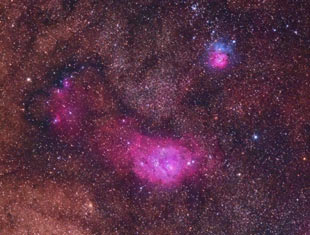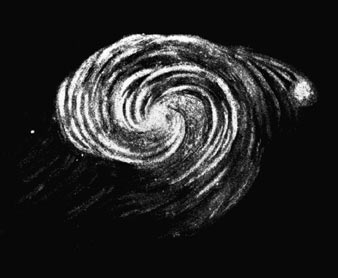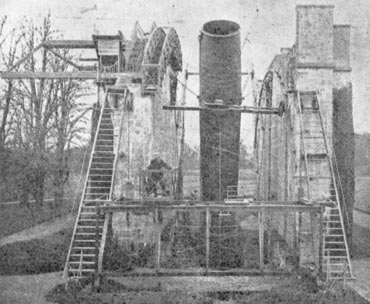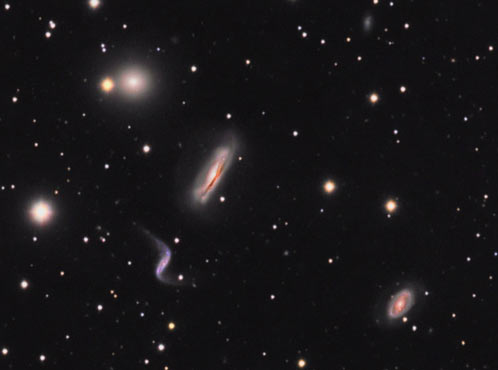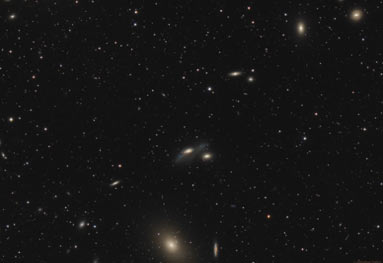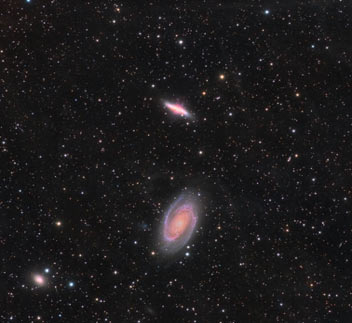As everyone knows, my unpublished book, Cosmic Duets, addressed deep sky objects where two or more galaxies or star clusters could be seen in one telescopic field of view.
Everyone is familiar with the Messier and NGC catalogs of deep sky objects.,
A very special catalog features 100 catalogued groups of galaxies called the Hickson Catalog of Compact Galaxy Groups. A Hickson Compact Group is a collection of galaxies cataloged and published by Paul Hickson in 1982.
Dr. Paul Hickson is an astronomer and professor of Astronomy and Astrophysics at the the University of British Columbia. The catalog and list of compact galaxy groups that bears his name is unique in the astronomy world and is comprised of 100 galaxy groups, with each group meeting the definition of a Cosmic Duet. This chapter is just a sampling of the 100 Hickson compact galaxy groups that can be viewed in a single eyepiece field. The full list of the Hickson catalog is provided as an appendix in this book.
In a general sense, galaxy groups are divided into two categories: loose galaxy groups and compact galaxy groups. Loose groups are roughly defined by immense distances that exist between the galaxies, with the distances between galaxies far greater than the size of each galaxy. Compact groups are galaxies whose distance between each member is equal to or less than the size of each galaxy itself.
The Hickson definition of compact groups of galaxies is as follows:
“By “compact group”, we mean a small, relatively isolated, system of typically four or five galaxies in close proximity to one another. Such groups do not necessarily form a distinct class, but may instead be extreme examples of systems having a range of galaxy density and population. Because of this, the properties of the groups in any particular sample may be strongly influenced by the criteria used to define the sample. The early surveys used qualitative criteria that, while successful in finding many interesting individual objects, do not easily allow one to draw broad conclusions about the groups as a whole. Thus, the focus in recent years has been on samples selected using specific, quantitative, criteria. These criteria define the minimum number and magnitude range of the galaxies, and also consider the galaxy spatial distribution.”
“Most compact groups contain a high fraction of galaxies having morphological or kinematical peculiarities, nuclear radio and infrared emission, and starburst or active galactic nuclei (AGN) activity. They contain large quantities of diffuse gas and are dynamically dominated by dark matter. They most likely form as subsystems within looser associations and evolve by gravitational processes. Strong galaxy interactions result and merging is expected to lead to the ultimate demise of the group. Compact groups are surprisingly numerous, and may play a significant role in galaxy evolution.”
A Hickson Compact Group is a collection of four or five gravitational bound galaxies in close physical proximity to one another, published in a list of 100 groupings of closely associated galaxies in proximity of one another. The Hickson catalog 110 groups contain a total galaxy count of 462. These compact galaxy groups comprise of galaxies and their large populations of stars, large quantities of diffuse gas, and are dominated by dark matter. Strong galaxy interactions result with the formation of one large elliptical galaxy forming as the compact galaxy group merges together.
Hickson groups are among the densest concentrations of galaxies known, comparable to the centers of rich galaxy clusters. Compact groups are undergoing intense study to gain knowledge of galaxy interactions and mergers.
Astronomers believe compact groups are relatively short lived entities that form via mergers of galaxies within loose subsystems and groupings. Simulations predict that this merging of the group members should proceed rapidly within a period of one billion years. Hickson groups are therefore snapshots at various stages in this merging process. Astronomers believe they may represent an intermediate stage between loose groups and individual galaxies. A better understanding of the nature of Hickson compact groups could help explain galaxy formation on a larger scale in the early Universe. Compact groups are surprisingly numerous, and may play a significant role in galaxy evolution.
Paul Hickson used a selection process that chose systems of four or more galaxies whose magnitudes differ by less than 3.0. Hickson defined a compactness criterion and an isolation criterion to assure all members of the group were together and reject distant non-member galaxies positioned along the line-of-sight. Even with a working set of selection criteria, the original 1982 catalog contained a few mis-identifications, such as compact galaxies mistaken for stars, and marginal violations of the isolation criteria. Revisions were made in 1989.
The Hickson catalog has stimulated the astronomical community to conducting a large number of studies covering subjects such as the dynamic properties, structure, morphology, physical nature, and cosmological implications of compact galaxy groups.
The velocities measured for galaxies in compact groups are in the neighborhood of approximately 200 km/s, making these environments highly conducive to interactions and mergers between galaxies. The reasons for the formation of compact groups is unknown, as the close proximity of the galaxies means that they should merge into a single galaxy in a short time period, leaving only a fossil group. The implication is that compact galaxy groups are short-lived, and should be extremely rare. Instead, the Hickson catalog identifies a significant number of compact groups.
Astronomers have proposed two ideas to explain the existence of of a high number of compact groups:
This is the final evolutionary phase of all galaxy groups. It is then possible that as one compact group merges to form a fossil group galaxy, somewhere another group is entering the compact phase. This would maintain the overall number of compact groups observed.
Compact groups are more stable against mergers than previously believed. This could result from their being dominated by a single, large halo of dark matter.
Clearly, Paul Hickson and his Compact Galaxy Group catalog has provided impetus to the astronomy community for further research. A survey of studies completed and ongoing concerning Hickson Compact Galaxy Groups include:
1. The Relation between Galaxy Activity and the Dynamics of Compact Groups of Galaxies
2. Globular Clusters around Galaxies in Groups
3. Effects of Interaction-induced Activities in Hickson Compact Groups: CO and Far-Infrared Study
4. Structural and Dynamical Analysis of the Hickson Compact Groups
5. Redshift Survey of Galaxies around a Selected Sample of Compact Groups
6. Dynamic properties of compact groups of galaxies
7. A photometric catalog of compact groups of galaxies
8. Neutral hydrogen in compact groups of galaxies
A few of the brighter Hickson compact galaxy groups are observable by 8” telescopes. Most are accessible by either Dobsonians, Newtonians or SCTs with apertures 12” or larger, or by professional telescopes 24” and larger.
Future Jim’s Corner articles will highlight Hickson Compact Galaxy Groups that can be seen by our own backyard telescope.

